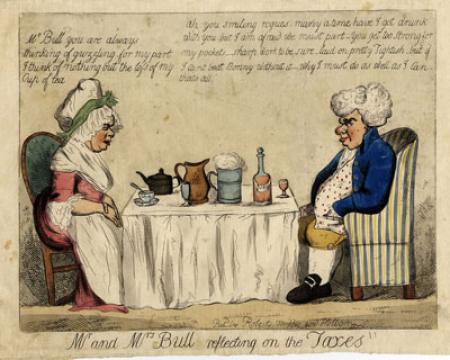
American Antiquarian Society
185 Salisbury Street
Worcester, MA 01609
United States
The linking of food to politics became increasingly popular from the mid-eighteenth century on as a means to communicate caution or approval of political structures and ideologies in America. Whether the colonies were referred to as a cake or a kettle of fish, the domestic language of food was easily understood and often appeared in print and visual culture. This seminar examines how and why a culinary vocabulary and food imagery developed and was employed as a widespread (though little studied) method of political/cultural/visual expression. The seminar will commence with the years surrounding the Stamp Act, to the War for Independence, through the Civil War and Gilded Age, and concludes with current implications and questions to consider.
The Center for Historic American Visual Culture (CHAViC) encourages and facilitates the use and understanding of popular images by scholars from a variety of disciplines including American studies, history, art and architectural history, English, gender studies, literature, religion, theatre, and environmental studies. The 2015 Summer Seminar, Culinary Culture: The Politics of American Foodways, 1765-1900, will be held Sunday, July 12 through Friday, July 17 at the American Antiquarian Society in Worcester, MA. The seminar is intended for college and university faculty as well as graduate students and museum professionals.
Through workshops, lectures, field trips, and cooking demonstrations participants will learn “how to look” by exploring an interdisciplinary approach to the study of American culinary culture as a means to understand the relationship among American foodways and evolving political, social, gender, public health, and economic ideologies through the 18th and 19th centuries. Participants will have the opportunity to learn from a wide variety of materials from the extraordinary collections at AAS including prints, cookbooks, political cartoons, broadsides, diaries, domestic manuals, newspapers, ceramics, ephemera of all kinds, botanical and horticultural illustrations/literature, children’s literature, and more.